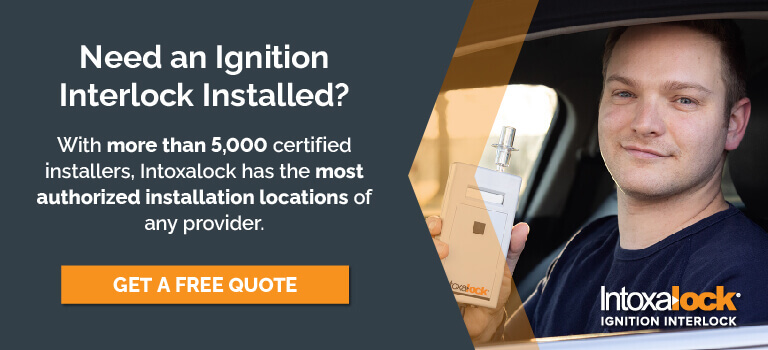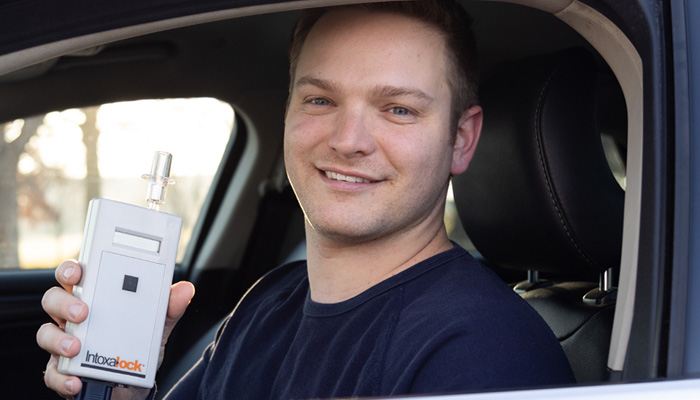Is Uber or Public Transportation Cheaper than an IID?
If you’re convicted of a drunk driving offense, it is likely that your state law will require you to install an ignition interlock device (IID) to get back on the road. Across the country, 33 states have all-offender ignition interlock laws, meaning every person convicted of DUI, OUI, DWI or similar drunk driving charge is required to install an IID as part of their license suspension or revocation.
When you install an IID, also called a car or vehicle breathalyzer, you regain certain driving privileges during your license suspension or revocation. You are unable to drive any vehicle you own or operate unless you install an IID.
Some drivers want to bypass the legal requirement of installing an interlock device. Some think it’s a hassle or too expensive, but installing an IID is a cost-effective way to gain back your freedom. Additionally, installing one and fulfilling the requirement is much less expensive than the additional legal fines and costs associated with driving illegally.
No matter how long a person avoids installing an interlock, many states make the IID requirement mandatory to reinstate your driver’s license. Be advised that if you want to regain your driving ability, you will need to plan for this requirement if you live in a state that requires it. Let’s look a few alternative ways to get around without an IID in states that allow a wait-out period.
Are Rideshares an Affordable Alternative to Get Around Ignition Interlock Requirements?
Ridesharing apps have changed the face of transportation. People are able to download a mobile app and request a ride from any location at any time if there are drivers available in your area. These useful apps are invaluable after you’re been drinking and need a safe ride home. But are they a sustainable choice for everyday travel to work, school, appointments and errands?
A 2015 study found that the average cost of a Lyft ride totaled $12.53 and the average Uber ride came in at $13.36. While these are national averages and fares vary by time of day, distance traveled and more, the costs quickly add up. Imagine if your daily commute costs around $8 each way daily, totaling $16 just to get to work or school and back home.
If you worked five days a week, you would spend an average of $80 per week ($320 per month) for Uber or Lyft rides. These costs will be even more if you’re traveling during peak hours. In addition, that figure doesn’t include running errands, going to events and everywhere else you go.
Are Taxi Rides a Good Option to Avoid Installing an IID?
Some might wonder if taxi services are comparable to or even less expensive than ridesharing. A 2014 report from Business Insider found that ridesharing is still less expensive than taxi fares across major U.S. cities.
They report that the average cost for a US taxi ride (5 miles at about 30 mph) is $15.97, (across all major US cities the range is $11.50 - $20.70). The only exception happened to be in New York City, where taxi services were slightly more affordable than Uber because of surge pricing during peak commute times. While taxis are more expensive than ridesharing, both are substantially more expensive each month than an ignition interlock lease.
Is Public Transit a Cheaper Option to Bypass a Car Breathalyzer Order?
Public transportation is a more affordable option than using a rideshare or taxi, but it is not more affordable when comparing cost over a month to an ignition interlock device. With public transit options you may have access to monthly passes, yet the cost of riding a bus, train or subway ranges from $3–$5 per day (up to $100 per month for two-way commutes five days per week), depending on where you live.
The amount could easily go over $100 per month with any non-work travel such as appointments, trips to the grocery store, errands and general daily travel. If you have children, parents, pets, or others who you transport to activities or appointments, public transit costs could get very expensive.
In addition to the mounting costs, you also rely on the schedule and routes of public transportation. The nearest stop might be far from your house or difficult to get to. Busses and other means of public transport can break down, experience delays along their routes and more. The occurrence of interruptions to service can leave you stranded or late to work. You’ll sacrifice money, convenience and control over your schedule to make public transit work for daily commuting.
To download our handy PDF guide on comparing the costs of an ignition interlock to other options for transportation such as rideshares, taxis, or public transportation click here.
Choosing an Ignition Interlock Device
Installing an ignition interlock device allows you to regain driving privileges faster, and it costs much less than relying on Uber or Lyft rides, public transit or taxi rides. The average cost of an ignition interlock device is about $3 a day — which is less than a fast food meal or latte at a coffee shop.
You also get back the freedom to drive, something you lose if you don’t install a device. The cost of a device is standard across providers, and installing Intoxalock means you choose an easy-to-use device that’s known for its reliability and accuracy. We help you understand the cost of an ignition interlock, so you know where you money is going and offer seven easy ways to help you budget for the device.
Intoxalock has more than 2,800 service centers across the United States and has state specialists who can help you navigate the IID process. Let us help you get back on the road. For more information about an Intoxalock ignition interlock device, call our state specialists at 833-623-0200.




